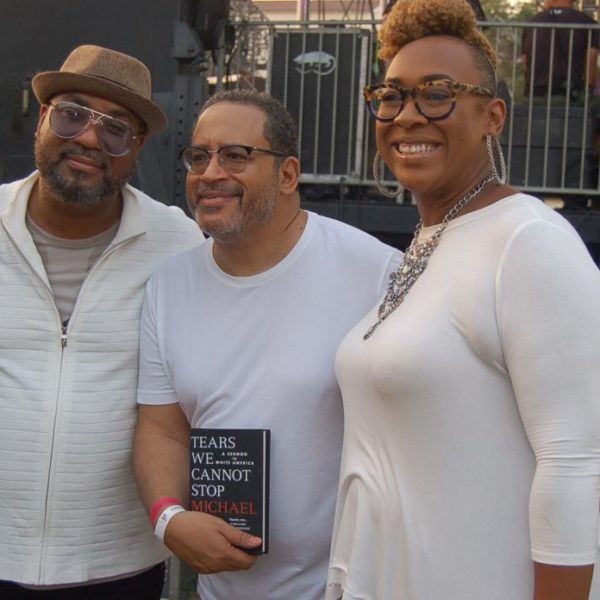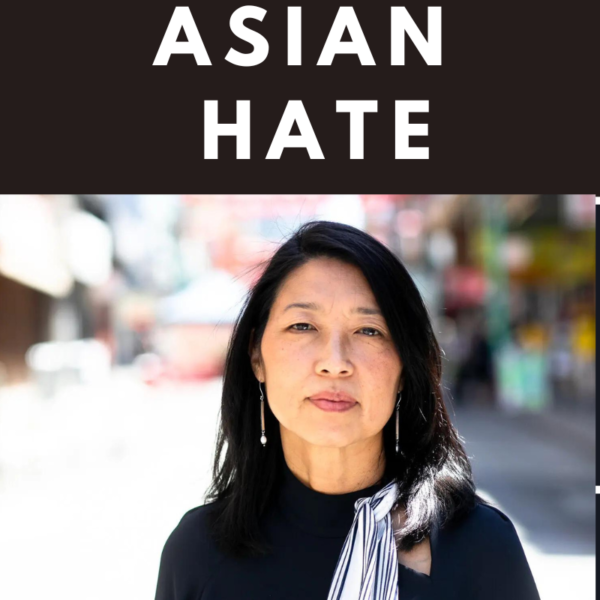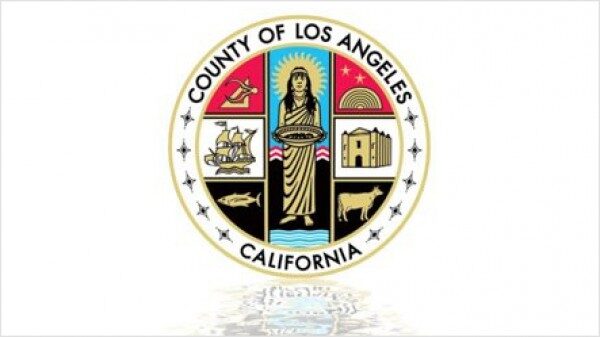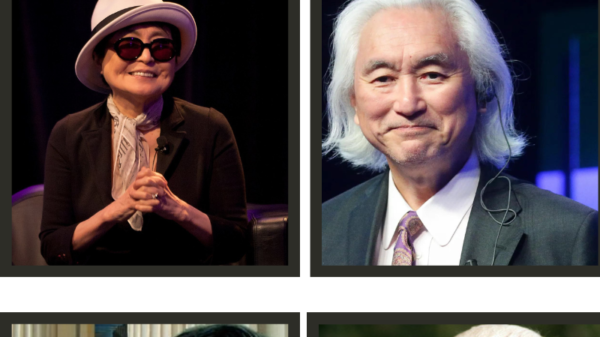Magazine, The Immigrant Experience
In a rapidly evolving world where storytelling takes center stage, the Ethnic Media Services (EMS) briefing, titled “And the Winners Are… Storytelling in Ethnic Media,” emerged as a powerful celebration of journalistic excellence within the ethnic media sector. This event was not just a gathering; it served as a platform to honor the rich tapestry of stories and voices that often remain unheard.
A Remarkable Submission Pool
The event kicked off with a resounding “WHY,” as over 300 entries flooded in for this year’s Ethnic Media Services-California Black Media Awards ceremony. These submissions stood as a testament to the passion and dedication that journalists in the ethnic media sector bring to their craft. A diverse panel of 25 judges, including veteran journalists, academics, and communication specialists well-versed in ethnic media, undertook the daunting task of reviewing these entries. The consensus resounded loudly: the quality of this year’s submissions was exceptionally high, leaving the judges pondering, “How do you judge the best from the best?”
A Gathering of Award-Winning Storytellers
The heart of the event lay in its promise to bring six of the winners into the limelight. Hailing from different ethnic media outlets, these winners shared their unique stories, the challenges they faced in their pursuits, and the captivating narratives they aim to explore in the coming year. For fellow journalists and enthusiasts, this was a golden opportunity to glean insights, tips, and inspiration from the very best in the field.
Sandy Close, the Director of EMS, warmly welcomed the audience to this special Zoom briefing, setting the tone for a deep dive into the world of ethnic media storytelling.
Resilience Amidst Adversity
What makes this year’s awards program even more remarkable is the backdrop against which it unfolded. In years past, the awards had faced challenges and neglect from mainstream media, despite being widely respected as a representation of ethnic media’s prowess. However, this year witnessed a resurgence, with a record-breaking number of entries, exceeding 300 in total. Notably, close to one-third of these entries were in languages other than English, reaffirming the diverse linguistic landscape of California’s ethnic media.
A Glimpse into Unheard Narratives
The winners’ stories, highlighted throughout the event, serve as windows into the parallel universe of news within ethnic media, often overshadowed by their mainstream counterparts. These stories are powerful, impactful, and offer a unique perspective to news reporting, making them a vital but often invisible part of the media landscape.
During the briefing, the award-winning journalists discussed their journeys in selecting their topics, the lessons they learned, and their future plans for reporting. These discussions provided valuable insights into the art of storytelling, journalism’s power to bridge cultures, and the unwavering commitment of ethnic media to amplify voices that need to be heard.
The event also featured testimonials from the esteemed judges who recognized the growing strength of ethnic media journalism. They emphasized the writers’ increasing assertiveness in exploring not just their own communities but also the world around them, proving that ethnic media serves as a bridge to a wider, more interconnected world.
In conclusion, this EMS briefing was not just an event; it was a celebration of the untold stories, the dedication of ethnic media journalists, and the power of storytelling to transcend boundaries and create understanding. It highlighted the importance of recognizing and celebrating excellence within the ethnic media sector, ensuring that diverse voices continue to find their place in the ever-evolving world of journalism.
In this remarkable EMS briefing, titled “And the Winners Are… Storytelling in Ethnic Media,” the spotlight shone brightly on the diverse array of stories that thrive within the realm of ethnic media. Among the esteemed speakers were John Dinh Xuan Thai and Anh Thai, representing Little Saigon TV. Their profound journey to Ukraine illuminated the harrowing realities of war and the resilience of refugees in Poland.
The Journey to Ukraine: A Tale of Humanity
John and Anh Thai’s story began in February 2022 when Russia invaded Ukraine, plunging the region into chaos and upheaval. Among the many immigrants trapped in the turmoil were Vietnamese laborers seeking refuge and safety. The Thai duo felt compelled to tell their story, a story of hope amidst despair, determination in the face of adversity, and the enduring human spirit.
Months of Planning and Dedication
The idea to produce this poignant story took root, but due to the turbulent conditions, their journey could not commence until October 2022. Nevertheless, John and Anh Thai remained undeterred. John’s partner, Anh, brought with him a wealth of experience as a journalist during the Vietnam War. This experience lent depth and perspective to their storytelling, as they recognized parallels between the two conflicts.
A Story of Humanity and Freedom
Their story emphasized the essence of humanity and the impact of war on people’s lives. Through their lens, viewers could witness the toll that war exacts on individuals and communities. They also shed light on the brave souls who sought freedom from oppressive regimes, drawing parallels between the struggles faced by those affected by the Vietnam War and the Ukrainian conflict.
Challenges Faced on the Ground
John and Anh Thai’s dedication to their storytelling journey was not without its challenges. As they ventured into Crimea, the threat of airstrikes loomed large, forcing them to grapple with concerns for their safety. They also navigated through security concerns and the constant uncertainty of their situation.
A Heartfelt Encounter
However, amidst the trials and tribulations, John Thai shared a profoundly moving moment. In a refugee camp in Poland, he encountered a young girl who approached him with a simple yet profound question, “Do you believe in God?” This poignant encounter left a lasting impact on him and underscored the resilience and faith of those enduring unimaginable hardships.
A Promise to Continue
As John Thai concluded his story, he emphasized their commitment to continue shedding light on the plight of those left behind in Ukraine. Their storytelling journey is a testament to the power of ethnic media in highlighting untold narratives, fostering understanding, and connecting diverse communities across the globe.
John and Anh Thai’s journey exemplifies the dedication of ethnic media to amplify voices, advocate for humanity, and bridge cultures through the art of storytelling. It serves as a reminder that amidst the chaos of conflict, there are stories of hope, courage, and compassion that deserve to be heard.
In the vibrant discussion at the EMS briefing, “And the Winners Are… Storytelling in Ethnic Media,” Nate Tinner-Williams, the editor of Black Catholic Messenger, stood as a testament to the power of ethnic media in unearthing hidden histories. His first-place win for features in English was not just a recognition of his journalistic excellence but also a celebration of his commitment to telling stories that have often been overlooked.
Shedding Light on Overlooked Narratives
The Black Catholic Messenger, founded in the midst of the pandemic in 2020, seeks to center African American Catholics in the national narrative. A significant part of this mission involves bringing to light the often-forgotten history of black Catholics in the United States. Nate’s passion for this endeavor shines through as he recognizes that African Americans’ association with Protestantism has often overshadowed their rich history within the Catholic Church.
A Story of Cultural Diversity
Nate’s story highlighted Father Anthony D. Hamilton, a figure deeply intertwined with the cultural tapestry of Louisiana, where African American Catholicism has a unique and rich history. Louisiana’s history as the northernmost Caribbean city, the birthplace of jazz, and a melting pot of French, Spanish, and African cultures plays a pivotal role in Father Hamilton’s narrative.
The Great Migration and Cultural Revival
Father Hamilton’s story is not just one of faith but also resilience and cultural revival. Born in Louisiana and raised in California during the Great Migration, he became part of the burgeoning black arts movement in the 1960s. His journey culminated in co-founding the Watts Prophets in 1967, a group that played a pioneering role in the evolution of rap and hip-hop music.
Unveiling Hidden Chapters
Nate’s story is a testament to how ethnic media can unveil hidden chapters in history. It not only highlights Father Hamilton’s extraordinary journey but also challenges conventional narratives about the origins of rap music. While many associate rap with New York City, Father Hamilton’s contribution from Los Angeles brings a fresh perspective to the genre’s history.
A Journey of Faith and Identity
Nate Tinner-Williams’ journey from being a black Protestant to a Catholic adds another layer to his storytelling. His curiosity and passion for discovering and sharing untold stories have led him to explore the intersection of faith, identity, and culture within the African-American Catholic community.
Looking Ahead: Celebrating a Centennial
Nate’s dedication to uncovering hidden histories continues with his upcoming story on the centennial celebration of St. Augustine Seminary in Bay St. Louis, Mississippi. This seminary holds historical significance as the first integrated Catholic seminary in the United States, to welcome black men to train as priests. It will mark 100 years of producing African-American Catholic priests and bishops, a milestone that deserves recognition.
Nate Tinner-Williams and the Black Catholic Messenger serve as a shining example of how ethnic media can amplify underrepresented voices and contribute to a more inclusive and diverse media landscape. They remind us that storytelling is a powerful tool for preserving history, fostering understanding, and celebrating the richness of our cultural tapestry.
Mireya Olivera, from Impulso News, captivated the audience at the EMS briefing with her compelling account of winning in the breaking news category for print and online media. Her coverage of the LA City Council scandal served as a beacon of light, shining upon the injustices and racism that lurk in the shadows.
Unearthing the Scandal
The story Mireya Olivera covered took place on October 15, 2022, during a march in LA organized by one of the oldest Wahakan organizations and the regional Indigenous community group, CLO (Indigenous Communities in Leadership). What triggered this massive protest was the exposure of recorded conversations involving city council members expressing racist views.
A Sobering Discovery
These deeply troubling comments were made by former City Council President Nodi Mathemas, a city council member, and the leader of the LA City Council. They openly discussed racist stereotypes, and the shockwaves reverberated throughout the Wahakan community, bringing people from all over California to the heart of LA to protest.
Community Unity
Mireya’s coverage brought attention to the solidarity and unity that emerged from this scandal. The Wahakan community, alongside diverse leaders, protested against these racist remarks. Prominent community figures, including restaurant owners, provided support and sustenance to the protesters. Additionally, activists from Black Lives Matter joined the protest, amplifying the message against racism.
A Courageous Testimony
One of the most powerful moments in Mireya’s coverage was the testimony of community leader Louise Carmen. He condemned the racist comments made by city council members, even though he had a close relationship with former council member Liz Karean. Louise’s stance showcased the courage needed to confront racism within one’s own circles.
Impactful Actions
Mireya reported on the significant actions that followed her coverage. The Wahakan community and the economic Wahakan community, in particular, demanded that derogatory terms used during the conversations be banished from the public realm. California senators visited Wahaka, and LA teachers embarked on a journey to get to know indigenous communities. This demonstrated how journalism can spur dialogue, education, and meaningful change.
A Commitment to Continue
The impact of Mireya’s coverage extends beyond the immediate aftermath of the scandal. She shared her commitment to continue following this story, including interviews with returning California senators and teachers who learned from indigenous communities. Impulso News remains dedicated to shedding light on issues of injustice and discrimination, making sure that such matters are neither swept under the rug nor forgotten.
Mireya Olivera’s work is a testament to the power of journalism in confronting and addressing societal problems. Her dedication to unearthing the truth and amplifying the voices of marginalized communities exemplifies the important role that ethnic media plays in promoting social justice and change.
Esmeralda Mendoza, representing Radio B’alam, a Mayan language station based in Oakland, took center stage at the EMS briefing. Her remarkable work in serving the Mayan community, a group often overlooked and underserved, has earned her the first-place award and the heartfelt gratitude of her community.
Unveiling Radio B’alam
Radio B’alam, part of the Mayan Voices team, is located in the Bay Area, predominantly in Oakland. The station proudly broadcasts in an Indigenous language called Myam, originating from Central America, particularly Guatemala. Esmeralda highlighted that the majority of their team consists of native Myam speakers.
Bridging the Gap
Radio B’alam operates on Facebook Live and radio, providing essential information that they believe is crucial for their community. Esmeralda stressed the importance of their work as a bridge between their community and vital resources. She noted that their community often struggles to access resources as much of the information is available primarily in Spanish.
A Valued Voice
Esmeralda emphasized that their role is to support their community and guide them to the right resources and organizations that are willing to assist. Their team takes immense pride in this work because they, too, are part of the immigrant community. They’ve personally experienced the hardships caused by language barriers and the lack of information offered in their native tongue.
Empowering Future Generations
Esmeralda mentioned that their team is committed to creating leadership within their families and the community, particularly for the next generation. Their dedication stems from the knowledge of the challenges faced by immigrants, which include legal and resource-related difficulties. They founded Radio B’alam as a beacon of hope and support for their community.
A Multifaceted Approach
Radio B’alam doesn’t stop at broadcasting. They maintain contacts with various organizations and engage in partnerships to provide valuable information. Esmeralda’s colleague, Martha, also contributes to their mission by discussing the station’s presence at the Oakland flea market and Colosseum. Here, they extend their outreach, letting the community know about the resources available to them.
Esmeralda and her team’s work at Radio B’alam exemplifies the spirit of community service and empowerment. Their dedication to providing essential information in a native language, supporting their fellow immigrants, and bridging the gap between resources and the community showcases the vital role ethnic media plays in creating an inclusive and informed society.
Pamela Anchang, representing The Immigrant Magazine, was awarded first place in the English language Best International Reporting Broadcast Category. Her outstanding work delves into the narratives of immigrants, particularly focusing on the Black Diaspora. During the EMS briefing, she shared her compelling stories and her vision for the future.
The Immigrant Magazine’s Mission
Pamela emphasized that while The Immigrant Magazine’s overarching mission is to amplify the voices of immigrants, she personally recognized a gap in how stories were being told, particularly within the African diaspora. Her goal is to explore and highlight the connections between different diaspora communities, starting with Africa and expanding to include Asia, Latin America, the Caribbean, Europe, the Middle East, and beyond.
Empowering Stories
Pamela’s award-winning story featured Dr. Nina Smart, a Romanian who escaped female genital mutilation (FGM), a practice affecting over 200 million women worldwide. Pamela felt compelled to tell Dr. Smart’s story because, even in the United States, immigrant communities quietly practice FGM, an issue that urgently needs attention.
She also shared the challenges faced by African artists, including legendary Nigerian artists, who often struggle to gain recognition and visibility in mainstream media. Pamela’s storytelling seeks to shed light on these challenges faced by African communities, despite their significant contributions to civilization.
Shifting the Narrative
Pamela’s storytelling extends to the younger generation, aiming to change their perceptions of Africa, which are often shaped by mainstream media’s negative portrayals. By sharing positive stories and role models, she strives to build a bridge of understanding and appreciation.
Next Steps: Leveraging Resources
Pamela discussed her ongoing projects, which include continuing to explore stories within the African diaspora. She is currently focusing on the Brain Drain issue—a topic crucial to the 350 million-strong African diaspora population. Pamela interviewed the founder of Africa’s Brain Bank, an organization dedicated to creating a repository of talent and resources among people of African descent. She also spoke with a legendary Nigerian actor involved in this initiative, aiming to leverage the collective potential of the African diaspora.
Pamela Anchang’s work at The Immigrant Magazine is a testament to her commitment to telling immigrant stories in a way that empowers and connects communities. Her dedication to showcasing inspiring narratives and fostering collaboration among diverse groups underscores the importance of ethnic media in building a more inclusive and informed society.
Rachel Tan, representing Skylink TV, was recognized and commended for her outstanding work in the feature writing category. Despite being unable to join the EMS briefing in person, she graciously shared a video message to discuss her work. Judge Diana Ding of Ding Ding TV also praised Rachel’s efforts, echoing Richard Rodriguez’s sentiments about the growing extent of ethnic media covering each other’s communities.
Rachel began by expressing her deep gratitude to EMS and the esteemed panel of judges for this incredible opportunity and recognition. The story she submitted shed light on the inspiring tale of Willy Davis, a true hero in Oakland Chinatown.
Willy Davis, The Chinatown Black Hero
In June of 2012, the Chicago-based non-profit organization, People Matter, held an annual Black Heroes of Chinatown award ceremony. Willy Davis, a tireless figure who had devoted two decades of his life to Oakland’s Chinatown, was honored as one of the distinguished recipients from across the United States.
Despite language barriers and cultural differences, Willy Davis’s unwavering dedication to Chinatown, his stand against racism, and his compassion for the community marked him as a true hero. Even after retiring, he continued to maintain the Lincoln Center facilities and confront community challenges like graffiti cleanups.
His dedication, undiminished by age and linguistic differences, earned him the title of a Black Hero of Chinatown. Willy Davis’s story is more than a tale of service; it amplifies cross-cultural understanding and unity.
Promoting Positivity and Solidarity
Rachel highlighted the importance of sharing narratives like Willy Davis’s, particularly in a time when “Stop the Hate” resonated as a rallying cry across various ethnic groups. She firmly believes that stories like this one promote positivity and solidarity.
Skylink TV remains dedicated to curating and sharing impactful stories like Willy Davis’s in the future, aiming to continue fostering understanding and unity within communities.
Rachel’s work at Skylink TV exemplifies a commitment to spotlighting inspirational narratives that bridge gaps and bring people together, showcasing the power of storytelling to foster unity and celebrate the unsung heroes within our communities.
Diana Ding, the founder of Silicon Valley Innovation Channel Ding Ding TV, made a significant and inspiring contribution during the recent briefing on the importance of cross-ethnic and multi-lingual media collaboration. Her insights shed light on the critical role media plays in promoting understanding, breaking stereotypes, and fostering unity among diverse communities.
One of the central themes in Diana’s contribution was the importance of stories that go beyond mainstream news coverage. She emphasized that these stories have a profound impact, especially on Chinese-speaking audiences. In the context of a story about a Black hero in Oakland Chinatown, Diana highlighted the transformative power of such narratives. These stories not only challenge prevailing stereotypes but also encourage people to learn about each other’s cultures, backgrounds, and experiences.
Diana’s passion for media collaboration and community building was evident throughout her remarks. She mentioned that the Chinese community had, at times, held misconceptions about African Americans being responsible for hate crimes against Asians. However, stories like the one in Oakland Chinatown are essential in dispelling such misunderstandings. Diana stressed that building trust and friendship among communities is just as crucial as reporting on hate crimes or providing essential services.
What makes Diana’s contribution especially noteworthy is her commitment to amplifying diverse voices and sharing stories across languages. She mentioned a music video collaboration involving multiple languages, showcasing the power of communication in breaking down barriers. Diana’s dedication to cross-cultural understanding and her belief in the importance of collaboration resonated strongly with the audience.
In a time when media can either divide or unite communities, Diana Ding’s insights remind us of the pivotal role we all play in promoting inclusivity, empathy, and unity through storytelling. Her contributions during the briefing serve as an inspiration to all of us to continue seeking opportunities for collaboration with ethnic and multi-lingual media outlets, with the ultimate goal of fostering a more connected and harmonious society.
#EthnicMedia #StorytellingExcellence #MediaAwards #DiversityInMedia #CulturalDiversity #CommunityVoices #MultilingualMedia #CrossCulturalNarratives #JournalismRecognition #Inclusivity #EthnicJournalism #AwardWinningStories #SEOOptimization #CulturalHeritage #MulticulturalPerspectives #MediaExcellence #EthnicCommunities #StorytellingImpact #EthnicMediaAwards #JournalismExcellence #SEOKeywords









